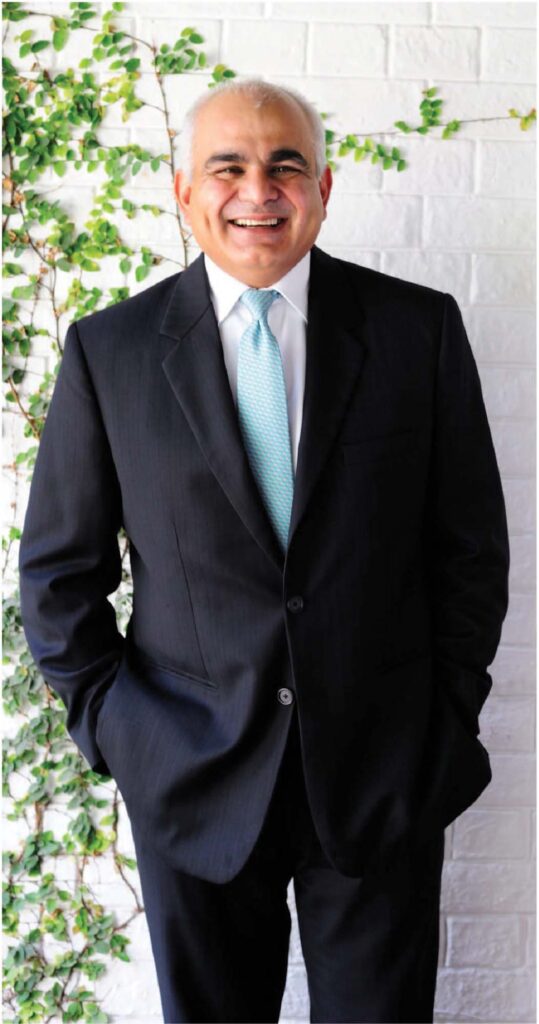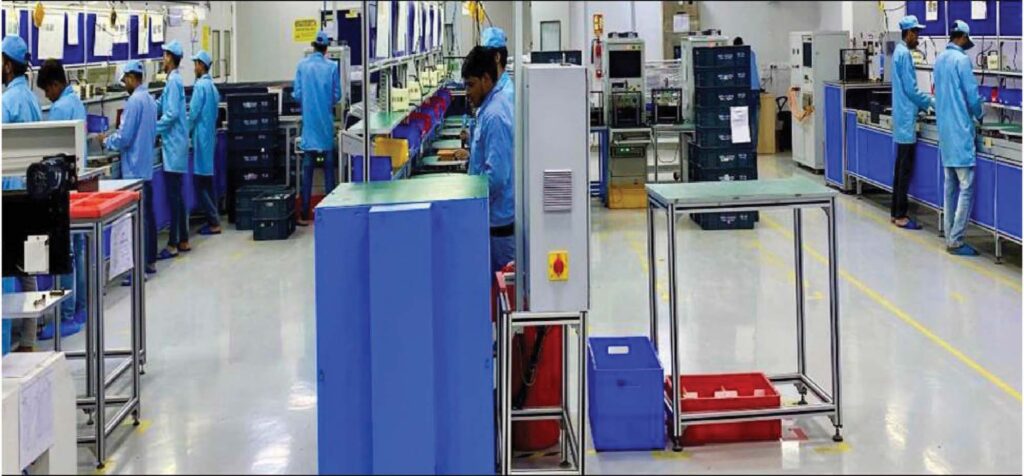Jaideep Wadhwa, Managing Director of Sterling GTake E-Mobility Ltd., sheds light on the company’s approach to electrification, its robust supply chain strategies, and future plans for diversification, in an exclusive interaction with Rajesh Rajgor

Sterling GTake E-Mobility, a subsidiary of Sterling Tools Limited (STL), has rapidly emerged as a key player in the electric vehicle (EV) components market in India. Established in 2020 and operational since 2021, the company has strategically positioned itself to capitalize on the evolving landscape of mobility.
Fasteners, EV Components, and Green Technologies
Jaideep Wadhwa emphasizes STL’s commitment to diversifying its business verticals into three main areas: fasteners, electric vehicle components, and other green technologies, including hydrogen. “While STL continues to lead in the fastener business, Sterling GTake focuses on the electric vehicle segment, particularly motor control units (MCUs),” reveals, Wadhwa.
In 2020, Sterling GTake entered a partnership with Jiangsu GTake to manufacture MCUs. Despite the absence of confirmed business at that time, the company boldly invested in engineering and set up production facilities. Wadhwa shares: “Starting with two and three-wheelers, the foray into electrification has expanded to light commercial vehicles (LCVs), where Sterling GTake now enjoys a strong market position. We supply MCUs to major original equipment manufacturers (OEMs) launching electric LCVs.”
Addressing the diversification strategy, Wadhwa envisions three distinct business verticals within the Sterling Group—fasteners, electric vehicle components (managed by Sterling GTake), and green technologies, including hydrogen. He believes: “This strategic alignment positions the group to navigate the dynamic shifts in the automotive industry,”
When discussing the EV market dynamics, Wadhwa identifies varied penetration levels across sub-segments. “Two and three-wheelers, along with buses for intra-city transport, are expected to witness high EV adoption driven by government policies,” Wadhwa states. However, he anticipates lower penetration in passenger vehicles, at least until charging infrastructure matures. “Inter-city buses and trucks may see limited electrification, with a growing interest in hydrogen fuel cell technology,” he feels.

Achieving MCU Dominance and Future Plans in Last-Mile EV Delivery
Despite starting operations in 2021, Sterling GTake has experienced remarkable growth, becoming the largest MCU company in India within two years. “We currently produce over 30,000 units per month, with plans to reach a capacity of 60,000 units per month and 600,000 units annually by the end of the fiscal year,” Wadhwa proudly highlights. He attributes this success to a dedicated team that overcame challenges posed by the COVID-19 pandemic, showcasing resilience and adaptability.
Looking ahead, Sterling GTake aims to solidify its position in last-mile delivery segments. “With a focus on two and three-wheelers, we plan to announce new ventures and expand our product offerings for the Indian EV industry,” Wadhwa reveals.
In terms of infrastructure, Sterling GTake operates its manufacturing plant at the Delhi-Faridabad border, with engineering centers in Delhi and Bangalore. Wadhwa states: “We have strategically positioned ourselves to leverage our locations for efficient operations and growth.”
Regarding research and development (R&D), Sterling GTake has invested significantly in strengthening its capabilities. Wadhwa highlights: “With a workforce of 280 people, including over 50 dedicated to engineering, we have allocated a substantial portion of its capex for 2023 to enhance R&D facilities. This investment encompasses workstations, software, and testing and validation equipment, emphasizing the importance of innovation and technological advancement in the EV sector.”
Mapping the EV Landscape
When asked about the values Sterling GTake E-Mobility adds and its working relationship with Original Equipment Manufacturers (OEMs), Mr. Wadhwa emphasized their extensive product portfolio. He stated, “We make motor control units from 1 kilowatt to 225 kilowatt, covering the entire spectrum from 48 volts to 700 volts. We’ve developed a portfolio approach to cater to various market segments.” According to him, this approach allows them to present options to customers quickly and efficiently.
On the topic of customization, Mr. Wadhwa mentioned, “We don’t typically design a new product for a customer today due to the time it takes for development. We offer our existing portfolio and make adjustments based on customer requirements, focusing on swift delivery to meet the market demand for electric vehicles.”
Supply Chain Resilience Amidst Challenges
Addressing challenges in the supply chain, especially in the wake of the COVID-19 pandemic and chip shortages, Mr. Wadhwa highlighted the company’s proactive approach. “A significant part of our investments was in the supply chain,” he explained. “We placed orders for chips and components early on, securing supplies. We’ve also built a strong ecosystem of subcontractors to support our manufacturing processes.” He emphasized the importance of having a credible track record with suppliers, ensuring reliability in fulfilling commitments.
Responding to questions about the impact of localization on supply chain resilience, Mr. Wadhwa clarified, “We are as localized as we can be, given the current state of the Indian electronic component industry. While we’ve localized the assembly of components, certain crucial electronic parts are still sourced internationally.” He emphasized the need for advanced planning and collaboration with suppliers to manage lead times effectively.
Roadmap for Growth and Innovation
Discussing Sterling GTake E-Mobility’s future plans, Mr. Wadhwa expressed optimism about the growth of the electric vehicle industry. “Our growth will depend on how the industry grows, and we anticipate good growth in the coming years,” he said. Highlighting their innovation roadmap, he mentioned plans to expand their product portfolio in the next two years, focusing on green technologies like electric and hydrogen-powered vehicles. “Our ambition is that our new technology businesses will be as big as our vast fasteners business in the near term,” he added.
Electrifying Off-Road: Exploring New Frontiers
In response to a question about the roadmap for construction equipment, Mr. Wadhwa acknowledged the potential for electrification in off-road vehicles. He explained, “Off-highway has good potential for electrification, especially for vehicles with fixed routes like mining trucks and also school buses. While it’s not a current priority due to high demand for on-road vehicles, we believe it will be the next frontier for electrification.”
Sterling GTake E-Mobility Ltd., under the leadership of Jaideep Wadhwa, has rapidly become a major player in the Indian electric vehicle component market. The company’s strategic vision, bold decisions, and commitment to innovation have positioned it for sustained growth in the dynamic landscape of electric mobility. As Sterling GTake E-Mobility continues to navigate the dynamic landscape of electric mobility, their commitment to innovation, supply chain resilience, and a diverse product portfolio positions them as key players in the evolving electric vehicle industry.